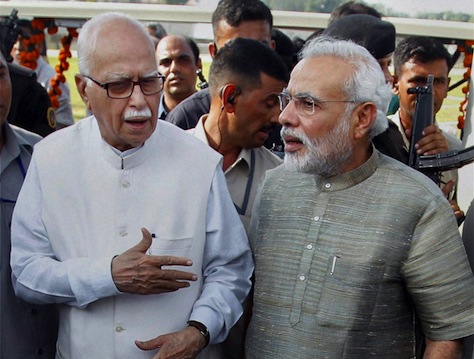With India’s massive nine-phase election now underway, what happens if Narendra Modi doesn’t quite win a majority in India’s parliament?![]()
Everyone believes that Modi, the longtime chief minister of Gujarat, and his conservative, Hindu nationalist Bharatiya Janata Party (the BJP, भारतीय जनता पार्टी) are headed for a historic victory. But that might not be enough — and if history is any guide, it won’t be enough, even taking into account the seats of the BJP’s coalition partners in the National Democratic Alliance (NDA).
That could mean that India’s ‘Third Front,’ a motley group of regional and Marxist/socialist parties, could team up with the remnants of the center-left Indian National Congress (Congress, भारतीय राष्ट्रीय कांग्रेस) and the few parties that remain in the United Progressive Alliance (UPA). India has had Third Front governments in the past, but it’s a path that traditionally leads to acrimony, dysfunction and, sooner rather than later, new elections.
But if the BJP performs as well as polls widely suggest it might, there could be no doubt that the BJP (and Modi) have a stronger mandate to govern India and a stronger claim on forming the government than a rag-tag coalition of a dozen or more parties.
In that scenario, the BJP may be forced to turn to additional parties — and their price for support might require that the BJP jettisons Modi as its prime minister. That’s when things get really interesting, and it’s why the internal rifts inside the BJP over the past two years will become so important if and when the BJP/NDA wins the election with less than an absolute majority. In particular, it means that the rift between Modi and the elder statesman of the BJP, Lal Krishna Advani (pictured above, left, with Modi) could determine the identity of India’s next prime minister. Continue reading Could LK Advani become India’s next prime minister?
